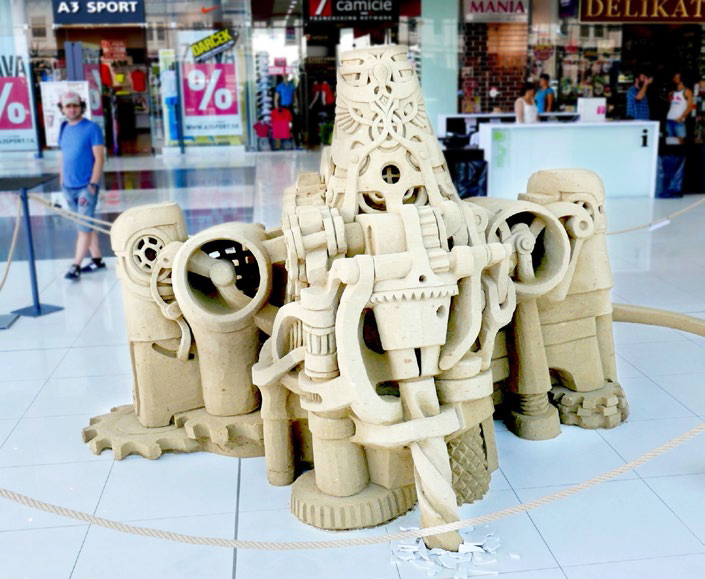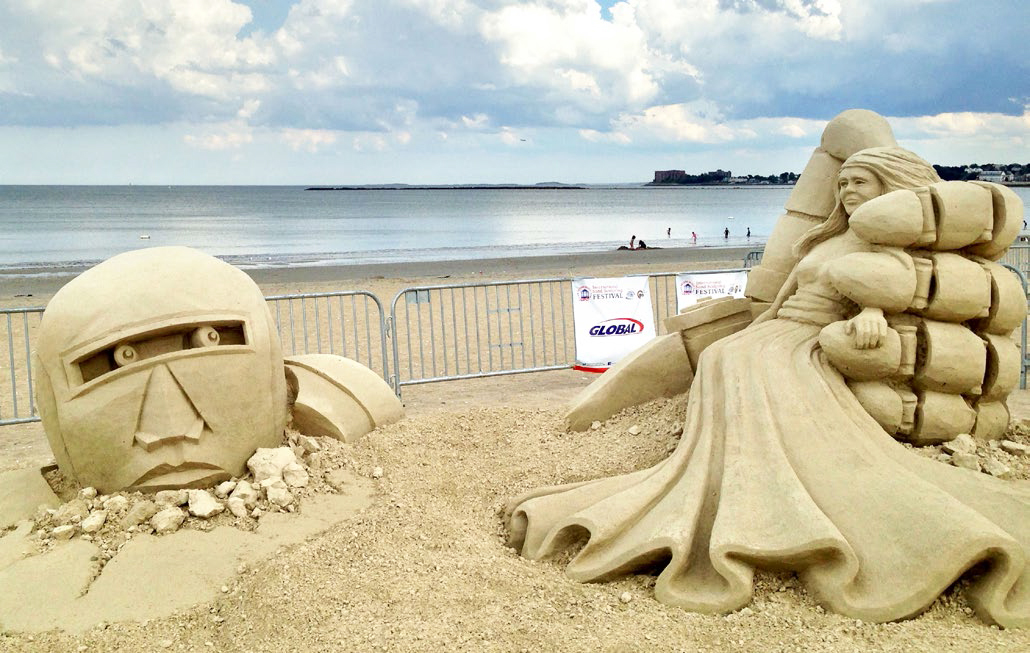Carving It Up - Page 5
 |
|
|
 |
|
|
 |
|
|
Besides providing entertainment to hundreds of thousands of beach goers every season, sand competitions serve as graduate school for carvers. In terms of perfecting the craft and learning new techniques, Jara says, "One contest is worth a year of solo work."
Barrett-Cutulle, like many artists, keeps a sandbox or two at her home to practice and work out designs. Building in sand requires strength, patience, engineering, and speed.
"There are plenty of women in this field, and it amazes me to see the strength that some of these women have," she says. "Hard work never scared me."
"It's strategic," she says about taking part in competitions, using plywood to build forms, then packing in the sand, then carving, top down. "You use just the right amount of sand, so you don't have to carve too much away," she says.
"Weather is always one of the first questions. Rain is actually helpful many times. It strengthens the sand," Barrett-Cutulle says. "High wind or torrential rain can destroy some parts of the piece or cause pit marks."
Jara recalls carving a tricky piece along a lake in British Columbia, with "a cold, glacial wind in the morning, and a [smelly] wind in the afternoon coming from the fields with cow manure."
"Carving the gap at bottom, I was afraid I would lose my arm," he says. "It's terrifying. You've got 15 tons of sand lofted over your head and you are carving at the bottom."
"It's immensely physical," he says of carving. "That's one of the beautiful things about it. It's a whole-body experience."
Time is one aspect of the sand carver's art that differentiates it from more permanent forms of sculpture. For one, Michelangelo was not required to carve 'David' in set periods of time over three days. (Sculptors point out, however, that some contests in Europe have much longer time limits.)
Then there is the inherent impermanence of the sand sculpture industry itself, an artistic discipline that is still young but already endangered, Jara believes, by some competition organizers who don't compensate the artists fairly, and by an aging core of sand carvers—though others say younger artists are doing fine work.
Most noticeably, though, you see the effects of time in the short lifespan of the finished product. "I have some pieces that literally came down the moment I turned my back on them," Jara says, while others "have lasted months and even years."
"People ask why would you spend so much time on something that's just going to go away. People cannot understand that," Rademaker says, noting that some of his pieces have lasted three years, including a dragon in the Santa Cruz hills that is "all covered with moss."
"Trying to do something that is permanent," he says, "you're beating your head against the wall. "It's relative," Rademaker adds. "The sculptures last longer than some of my relationships with women."
• Watch out for sand competitions near you. The 'U.S. Sand Sculpting Challenge and 3D Art Expo' is a top event—this year set for San Diego September 1-4. "This is the only one in California that has international professionals," Kirk Rademaker advises. "The sculptures are incredible!" ussandsculpting.com
Photography: Flint Weiss, John Auza, John Bailey (Crowborough - East Sussex, UK), Marie Therese Magnan, Allison Taylor, Niels Jorn Buus Madsen, Emad Aljumah, Jedes Bild, Sandestin Golf and Beach Resort; and courtesy Kirk Rademaker, Dan Belcher, Carl Jara, Deb Barrett-Cutulle




